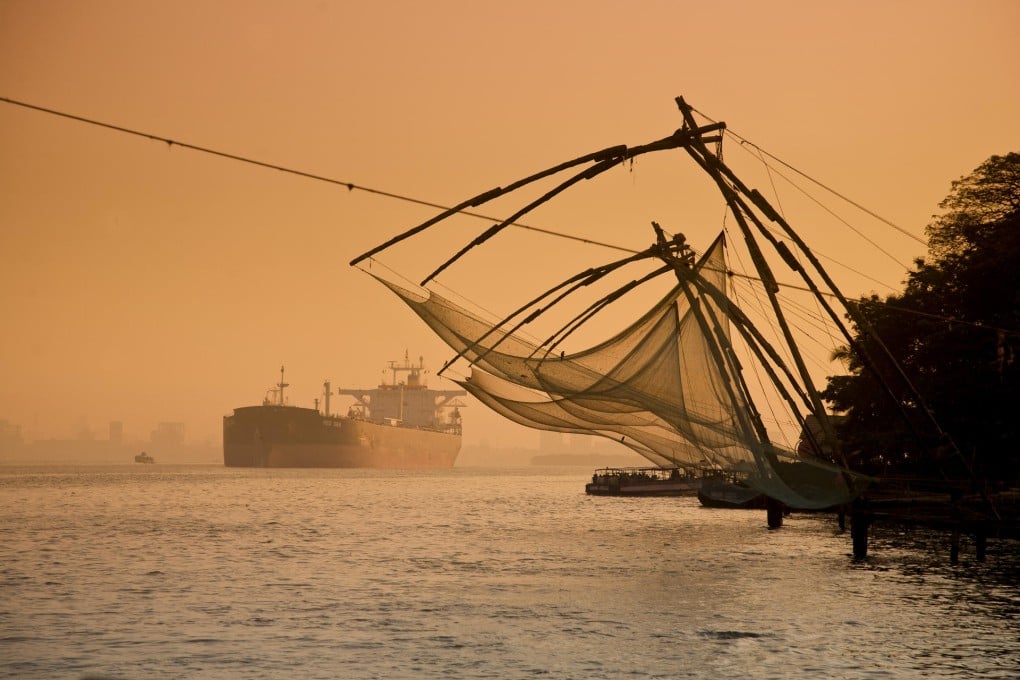
On the Malabar Coast of southwest India, an enduring mystery relating to medieval China-India contact lives on in the form of fishing nets.
The cheenavala - as the Chinese net has been called by locals in the Indian state of Kerala for nearly half a millennium - is cast wide and high off the waters in Fort Kochi. Each net is suspended at least 10 metres above sea level and spans about twice that distance between teak or iron posts.
The cantilever net structure is balanced by huge rock counterweights and manoeuvred by a team of six fishermen.
Every five minutes or so, from sunrise till just before midnight, each crew heaves its net up and down in concert. If they're lucky, the fishermen will find a few tails flapping in their giant hammock-like contraption. Usually the cheenavala come up empty.
Persistence can pay off, however. Along nearby beaches, the netted bounty, which can includes king prawns and pomfret, can sometimes be seen laid out in a similar fashion to that of a Hong Kong wet market.
There's little trace of the heritage behind the nets anywhere else on these shores, bar a few place names evoking a Chinese presence. For example, in Kozhikode, 200km north of Fort Kochi, there is a site called Cinakota, meaning "Chinese fort". Up the coastline another 15km, in Kappad, the landing place of Vasco da Gama - the Portuguese explorer and first European to reach India by sea - there still is a compound named Cinacceri, meaning "Chinese settlement".